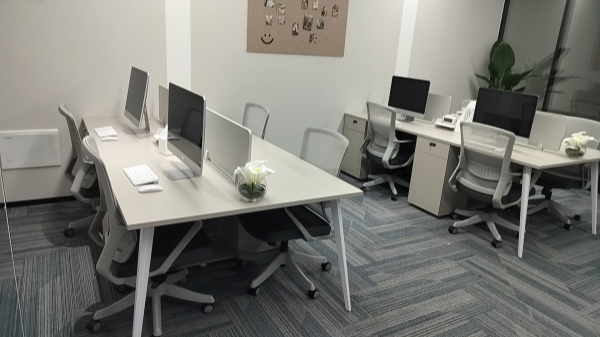In modern hospitals, the administrative area is the central hub for operations management, patient communication, and resource coordination. As hospitals increasingly prioritize office efficiency and employee comfort, a high-quality, ergonomically designed office chair is no longer just a piece of equipment, but a crucial component affecting hospital management efficiency, employee health, and brand image.
1. Emphasizing Ergonomics for Healthy Long-Term Work Experience
Modern hospital administrative staff commonly face long hours of seated work. Choosing an ergonomically designed administrative office chair can effectively reduce pressure on the cervical spine, lumbar spine, shoulders, and back, reducing the risk of occupational diseases and improving concentration.
Common ergonomic design features include:
Adjustable backrest: Supports the lumbar curve, relieving lumbar strain;
Adjustable seat height and armrests: Adapts to employees of different body types;
Headrest and lumbar support: Suitable for administrative managers and middle-level staff;
Dynamic tilt design: Supports both forward-leaning and backward-leaning rest positions.

2. Hospital office environments require a "quiet and undisturbed design."
Hospital office environments typically require a quiet environment. Ideal medical management office chairs must possess the following features:
Silent casters: To prevent noise when sliding on the floor;
Stable chassis: To maintain a stable center of gravity and allow for flexible movement without disturbing others;
Professional gas springs: To ensure quiet adjustment.
These details not only meet the hospital's requirement for a "quiet workspace" but also reflect the importance placed on the workstation experience of management personnel.
3. Comfortable fabrics + easy-to-clean materials are a plus
Hospital office environments generally have higher cleanliness standards than those of typical businesses. When choosing office chairs, the following points should be considered:
Breathable mesh or hypoallergenic coated leather: Mostly water-based and easy-to-wipe materials, suitable for well-ventilated administrative areas;
Antibacterial fabrics: Enhance hygiene standards, extend the chair's lifespan, and are suitable for long-term, repeated use;
Abrasion-resistant and flame-retardant certification: Ensures safety.
The selection of modern hospital office chairs is not just about the product itself, but also reflects a medical institution's management attitude, health and wellness philosophy, and professional brand image. From ergonomics and durable structural design to quiet and healthy materials and easy-to-clean properties, chairs in hospital administrative office areas must not only be "comfortable to sit on," but also "comfortable to sit on and safe to sit on."